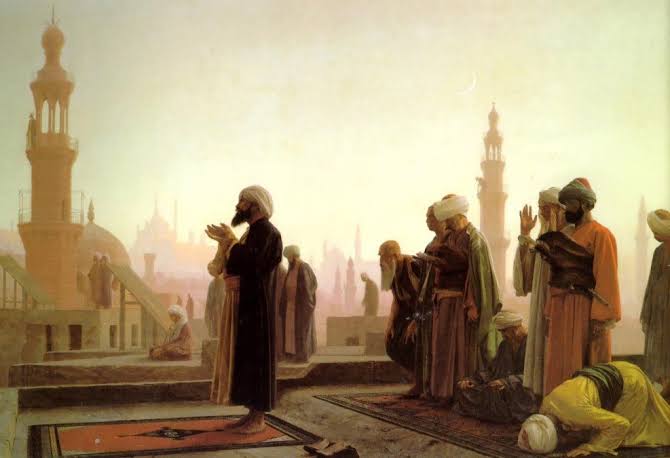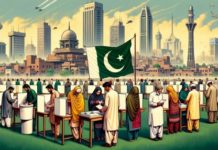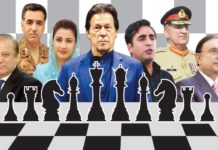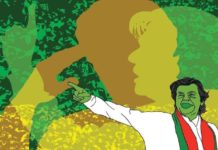Translator: Rabia Aslam
Source: Dr. Mubarak Ali, “Almiyah-e-Tarikh”, ch. 8, pp. 77 – 81, Fiction House, Lahore, (2012).
The British rule in India brought about fundamental and revolutionary changes in the basic structure of the society. Along with political, cultural and economic changes, scientific and artistic inventions dealt a severe blow to religious superstitions and weakened religious regression. In this regard there were visible differences between Western and Indian societies. European society evolved through a process of scientific and technological inventions, and each individual took an equal part in the development of the society. The masses not only accepted these scientific developments mentally but made full use in their everyday lives. In contrast, these inventions in India came from Europe and became prevalent in a society that was not psychologically ready to accept them, so they looked at everything new with skepticism. And while accepting them, they were fearful and hesitant.
Characteristically, in Muslim society, the class of Ulema was strongly opposed to new scientific and artistic inventions. The reason for this was that their system of education was based on old and outdated traditions and did not change in any way along with the changes and requirements of the new age.
The main purpose of the education system, which was prevalent in the Muslim society, was to teach only those subjects which kept the beliefs and faith intact and all such subjects, thoughts and ideas which created doubts and questions about the beliefs were definitely not be taught. Thus, from the very beginning, the scholars of India were opposed to philosophy, because philosophy tests everything on the basis of reason by creating doubt in the mind. That is why ‘Maulana Rashid Ahmad Gangohi’, the head of Deoband school of thought, did not include philosophy in his academic syllabus and sternly said that any student who will learn philosophy is not my disciple (1).
Deoband academic adopted “Dars-i-Nizami” as curriculum, which was developed in the eighteenth century. It was taught without any modification. The core subjects in this curriculum included: Arabic language and grammar, logic, traditional medicine, mathematics, art of rhetoric, Islamic jurisprudence, principles of Islamic jurisprudence, theology, and hadith. Neither the history of Islamic countries, nor the history of India, geography or natural science were included in this syllabus. Commenting on this curriculum, Mushir-ul-Haq wrote:
“There was no emphasis on modern science, students were not taught any modern Indian or European language. Not even English which had become the second language of India.
There was no arrangement for teaching world history, Indian history, nor was there any textbook pertaining to geography or about any social sciences that provided information about non-Muslims”. (2)
The students produced by Deoband, Farangi Mahal and Mazahir-ul-Uloom and similar madrassas were completely unfamiliar with modern education, modern traditions and the changes of time. And mentally they were the product of the middle ages. Not only were they unaware of the new political, social, scientific and artistic inventions and changes, but also, they were unable to understand the historical process as well. Therefore, the Ulema could not take up any profession or any job. Their place was only in madrassas and mosques, and in order to solve their economic problems, they had to try to establish religious institutions, keep collecting donations in the name of faith while clinging to religious superstitions.
Hence, they opposed everything new in science, art and craft. This can be gauged from books like “Fatwa Dar-ul-Uloom” and “Fatawa Rasheedia” against scientific inventions and social change. For example,
“it is not permissible for Muslims to wear English hats and caps because they imitate Christians” (3).
Regarding photography, camerawork or any kind of art, it is stated that Photography is absolutely forbidden in Islamic law. Whether with pen or with camera. It is not permissible for a picture to be placed merely for adornment if it is of a living being, but if it is placed in a place of humiliation, such as on the floor, a shoe-rack or at such a place, then it is permissible. For medical information or a map for war, it is not permissible to keep a complete picture. For medical needs, a separate picture of each organ can be kept, except the head. It isn’t permissible to keep a picture of the head, even without the body. Explaining further, it has been said that to make a picture of a living being, whether in the form of a statue or in the form of an image, whether it is made with a pen or printed in a press or with a camera, is a great sin. Pictures of animate beings are haram, whether they are humans or other creatures, whether they are three-dimensional or two-dimensional, whether they are printed, drawn, etched, engraved, carved, cast in mould, etc. Four types of images are allowed. Pictures crafted without face of any living-being, pictures that represent any humiliation, or are so small that if you put them on the ground and look at them, you will not see them completely and pictures of baby dolls for children that too without any face (4).
In response to a question that can a geography map be crafted which contains pictures of animals, plants, and other information? In response to this, a fatwa was issued that photography is absolutely haram (In Islamic jurisprudence, haram is used to refer to any act that is forbidden) and if an image of an animal is drawn or sketched, it should be without head and limbs. (5)
Fatwa was also issued on modern sports as well, that whether the game is played with a ball or any other sport, it is ‘Makruh’ (In Islamic terminology, something which is ‘makruh’ is a disliked or offensive act literally “detestable” or “abominable”). If it involves blood-shed, if it is for fun and to relieve fatigue then it is permissible, but it is ‘makruh’ to play football because it is played by wearing shorts. Moreover, all the sports in which English attire is worn are not permissible. Such games that interfere with the necessities of Islam, i.e. prayers, etc. are also forbidden. (6)
When asked about theater and cinema: “Muslims go to the theater to see the spectacle, to work in it, to sing, to dance, to change form, to change clothes, to wear women’s clothes, to participate in it, to work.” And what is the rule of Shari’ah about encouraging it? In response to this, a fatwa was issued that it is a combination of a grave sin and many major sins, and whoever urges people to it is a great sinner (7).
Someone has drawn attention to the issue of whether it is permissible to show pictures of the kings of Islam in cinemas or not. In response, it was said that it is an insult to them and cinema is an instrument to insult Muslim kings. It is illegal (8).
It has been decided that cinema is a collection of many sins and denials (9).
In the fatwas issued after the invention of radio, clerics said that it is not permissible to recite the Qur’an in any way on the radio since the songs were also played on it (10).
Though, it is also not permissible to listen to the recitation of Holy Quran on the gramophone (11).
Various clothing and fashion trends were also opposed, such as the fact that it was forbidden for women to wear shoes with heels (12).
Fatawa Rasheedia also contains a reaction against the new socio-economic changes. For example, sending money by money order has been said to be against Shariah. And depositing money in a bank, whether on interest or without interest, is also against the Shari’ah (13).
Apart from these fatwas, the Ulema of the time opposed anything conflicted with old-school traditions, be it political, social or economic. Moreover, the use of loud speakers, travel through railways, admission of patients in hospitals, use of new medicines, European style clothing, European cuisines and adoption of their habits etc.
But the scientific and artistic inventions that facilitated human life became popular among the people in spite of these fatwas and their use increased due to the need of the times and they were accepted not only by the society but also by the class of clergy who were initially against them. The reason for the opposition to these scientific and technological inventions in the early days and the resistance to social change was that the Ulema were ignorant of the process of change and could not understand its importance. The same is true today: because of their outdated education system they are unable to understand the new changes and their needs and for them everything new is against religion but after using it they go ahead and adopt all the scientific inventions. This clearly demonstrates the victory of science over religious superstitions and beliefs.
References:
(1) Muhammad Mian: Ulema-e-Haq (vol. I) Delhi (9) p.85
MUSLIM POLITICS IN MODERN
(2) Mushir-ul-Haq, “Muslim Politics in Modern India”, p. 19, Lahore
(3) Fatwa Darul Uloom, pp. 979-991-992, , Karachi.
(4) Ibid, pp. 993-994-995.
(5) Ibid, pp. 999-1000.
(6) Ibid, p. 1002.
(7) Ibid, p. 1003.
(8) Ibid, p. 1007.
(9) Ibid, p. 1007.
(10) Ibid, p. 1008.
(11) Ibid, p. 1012.
(12) Ibid, p. 745.
(13) Rashid Ahmad Gangohi, Fatawa Rasheedia, pp. 430-431, Karachi.








